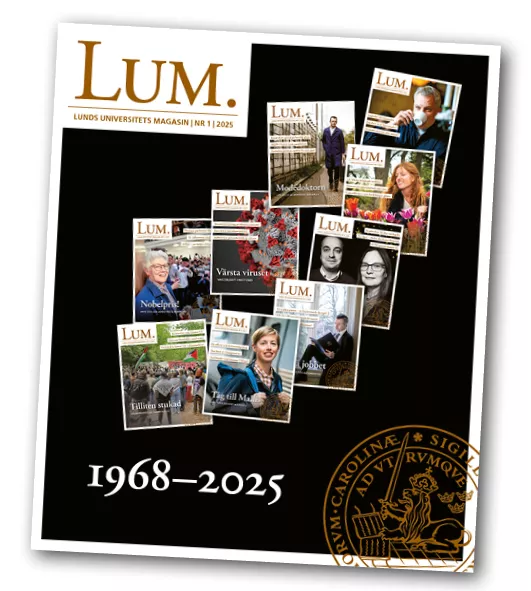An ordinary toilet flush uses around five litres of water. The water used is the same as the water we drink from the tap, and has the status of a comestible. This waste of drinking water got chemical engineering researchers at LTH thinking about other solutions, which resulted in a rainwater toilet.
The person who set the ball rolling for the toilet, which can save up to 36,000 litres of drinking water per year, is Tobias Hey. Along with colleagues from Akademiska Hus, he shows us around up on the roof of Kemicentrum, explaining how the rainwater runs from the building’s highest point to a lower roof, before finally being fed down to a tank at the bottom of the building. The roof that rainwater is collected from has a surface area of 800 square metres.
There is algal growth on the roof, and it is dirty thanks to the birds who use the surface as a toilet.
“The rain collected in the first large water butt inside Kemicentrum brings all kinds of things with it from the roof. We’ve seen pollen, vegetation, soil, feathers, bird poo, insects and eggshells,” says Tobias Hey.
, Tobias Hey agrees that the possibility of soil and feathers swirling around in the flush isn’t all that appealing.
“Dirty, polluted water for flushing can also be a health risk. In order to be able to use rainwater in the toilet it has to be treated,” he says.
The cleaning process at Kemicentrum involves dirty rainwater from the butt being fed over a trough next to it, where sedimentation occurs. After that, the water is filtered through a membrane housed in the next cistern. The membrane is a flat sheet with tiny, porelike holes in it that are too small to be visible. Since the membrane is hydrophilic, it does not repel the water, but lets it pass through the filter before finally being fed into the flush butt – the water’s penultimate destination before the toilet itself.
Flushing a toilet with rainwater is unusual, but not entirely new, according to Tobias Hey. But purifying water using the membrane technique is not something anyone else in Sweden is doing, he says.
The membrane technique – something chemistry researchers are experts in – is both environmentally and financially astute.
“The water passes through the membrane because of hydrostatic pressure, and since the pressure causes filtration of the water there is no need to add energy, the purification system runs entirely without electricity,” says Tobias Hey.
But how clean does the flushing water get using the membrane technique? Tobias Hey explains that the membrane filters out particles that are larger than 0.1 micrometres across. For comparison, that means particles that are one thousand times smaller than the diameter of a human hair, but particles smaller than that, and soluble substances, can pass through.
“The aim is not to produce drinking water, but to replace drinking water with water that is sufficiently clean for use in flushing.”
The question still has to be asked – can this rainwater be used as drinking water after membrane filtration?
“The Swedish Food Agency’s requirements for drinking water are very high, and we haven’t met them so far. But if I found myself in a situation where this was the only water available, then I would drink it,” Tobias Hey says.
What if it doesn’t rain – can the flush water run out? Tobias Hey laughs as he responds.
“The trough of flushing water is enough for 400 flushes and luckily we are collecting rainwater here in Skåne, so there isn’t much risk of it running out.








